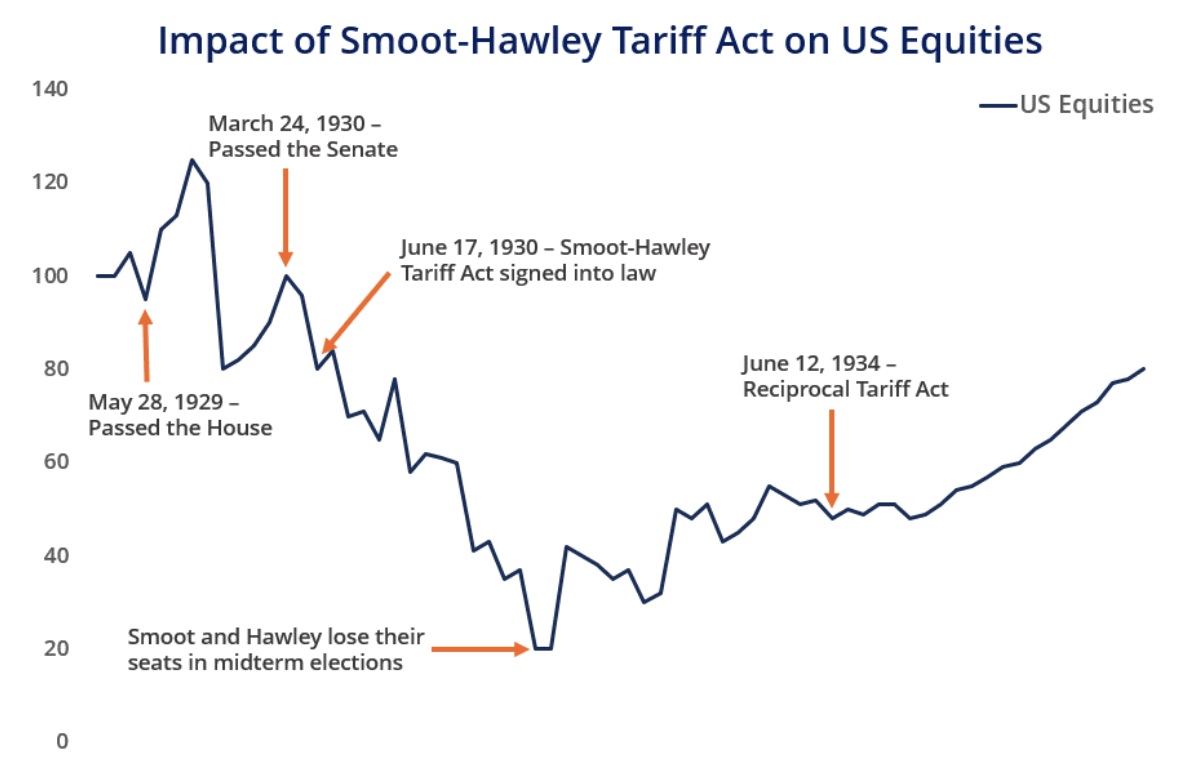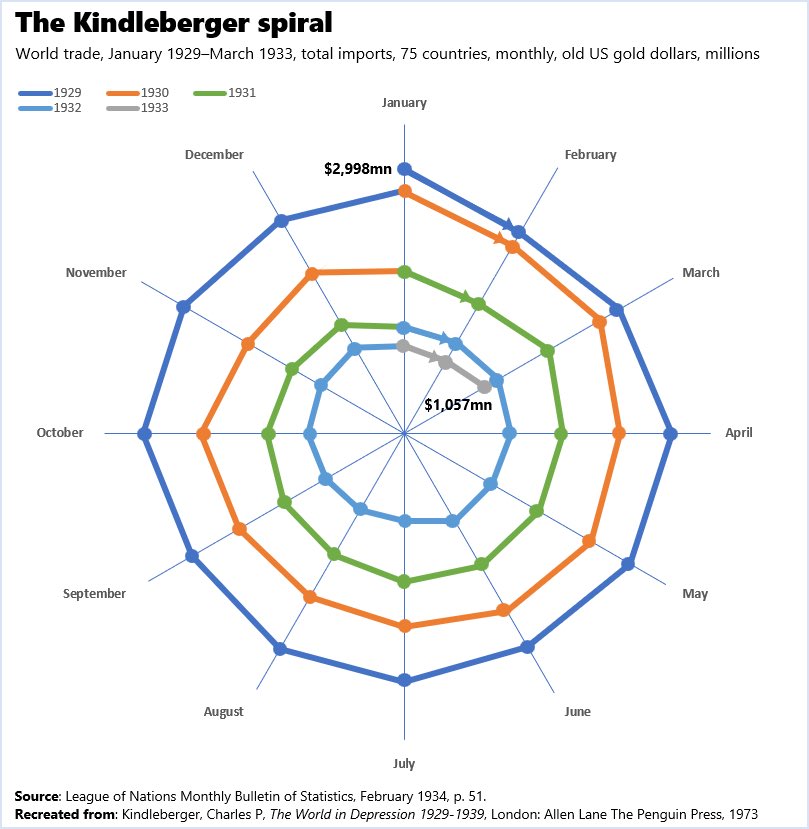I’ve periodically mentioned that Herbert Hoover’s protectionism contributed to the Great Depression of the 1930s. In today’s column, let’s look at some details.
We’ll start with this short video featuring Dartmouth’s Doug Irwin.
You’ll notice that Professor Irwin does not claim that Smoot-Hawley caused the Great Depression. He merely makes the more limited point that higher trade taxes undermined prosperity.
Let’s look at two graphs to get an idea of how Hoover’s protectionism contributed to the downturn.
First, here’s a chart from the Committee to Unleash Prosperity that shows how enactment of the law seems to have had a very negative impact on the stock market (just as financial markets today are reacting negatively to Trump’s protectionism).

Next, here’s a chart showing how global trade collapsed between 1929 and 1933.
As you can see, the big drops were in 1930 and 1931, after Smoot-Hawley went into effect. This is a picture of how tit-for-tat protectionism backfires.

I’ll close today’s column by emphasizing once again that Hoover’s protectionism was awful, but it would be an exaggeration to claim it was the only reason for the economy’s awful performance in the 1930s.
That’s because Hoover made many other mistakes.
Moreover, President Roosevelt made a bad situation even worse when he took over after the 1932 election. He doubled down on many of Hoover’s mistakes.
- Even more tax increases
- Even more spending increases
- Even more intervention
In FDR’s defense, he didn’t make protectionism worse. Indeed, there was a 1934 law that eased the awful effect of the Smoot-Hawley trade taxes. Overall economic policy definitely worsened under Roosevelt, but at least there was an improvement on trade.
My final comment is that monetary policy deserves the lion’s share of the blame for the Great Depression, with some of the problems going back to failure of governments to properly restore the gold standard after World War I.

